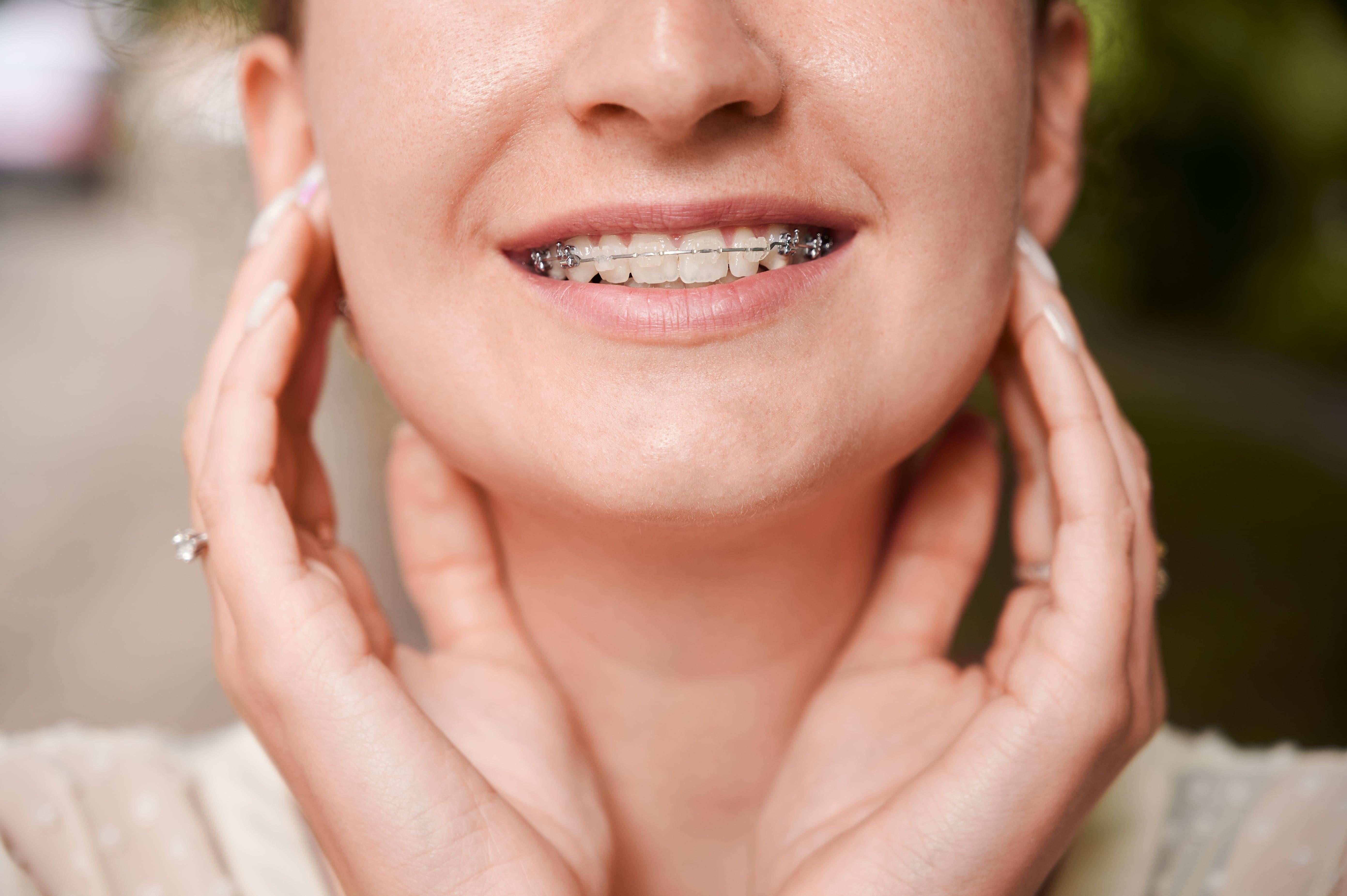Posted on December 24, 2024

As orthodontic technology advances, the choice between braces and clear aligners has become more prominent. In the past, metal braces were the standard solution for correcting dental misalignments. However, the introduction of clear aligners has provided a less noticeable and often more comfortable alternative.
When deciding between them, it’s not just about looks—it’s about finding the option that best meets your orthodontic needs and lifestyle. At Smilebliss, we can help you choose the right option for your smile.
Contact us today to schedule your consultation and get personalized advice from our experts.
Braces use metal brackets and wires to shift teeth into their proper position. They are one of the most recognizable tools in orthodontics, mainly due to their visibility.
Clear aligners are custom-made plastic molds that fit snugly over the teeth. Thanks to their discreet design, they blend seamlessly with a person’s natural smile, making them almost invisible.
Their subtle appearance has made them a popular choice for both patients and orthodontists who want a balance between function and aesthetics.
 The most obvious distinction is appearance—braces are easy to spot, while aligners offer a more subtle option. Another key difference is removability: aligners can be taken out for eating and cleaning, while braces remain fixed.
The most obvious distinction is appearance—braces are easy to spot, while aligners offer a more subtle option. Another key difference is removability: aligners can be taken out for eating and cleaning, while braces remain fixed.
In terms of complexity, braces are often better suited for more severe orthodontic issues, while aligners work well for mild to moderate cases.
Here are some key differences between the two:
Braces consist of brackets, wires, and bands. The brackets are attached to each tooth, serving as anchors for the wires that apply pressure to move the teeth. In some cases, rubber bands are used to provide additional force to achieve the correct alignment.
The process starts with an initial consultation where the orthodontist evaluates your teeth. Next, the brackets are applied—a key step in the treatment. Adjustments are made every few weeks to keep progress on track. On average, treatment lasts 18 to 24 months, with follow-up visits ensuring that the teeth remain in their new positions.
To protect your braces, it’s best to avoid sticky or hard foods that can damage the components. Special brushes and floss threaders help with cleaning. Regular orthodontic check-ups are also necessary to prevent any complications.
Clear aligners use a series of custom-fitted trays to gradually move teeth into their correct positions. Unlike braces, which apply continuous pressure through wires and brackets, aligners gently shift teeth over time.
Clear aligners are made from plastic trays designed to fit over your teeth. Attachments, small tooth-colored dots, may be applied to certain teeth to help the aligners exert the right amount of pressure.
Aligner cases are important for storing and protecting them from damage when not in use, keeping them clean and safe for oral use.
The main components of aligners include:
The journey begins with an orthodontic scan or mold creation, which is critical for designing aligners that fit perfectly. After the scan, custom aligners are made. Patients are typically given a schedule to switch to a new set every few weeks, allowing for gradual and controlled movement of the teeth.
Cleaning aligners with a soft brush and lukewarm water helps to remove plaque and prevent staining. Always store them in their case when not in use to protect them from bacteria and potential damage. Wearing aligners for at least 22 hours a day is important for achieving the desired results.
 Costs vary depending on the treatment and individual needs. Braces may require additional payments for routine adjustments, while aligners often include follow-up services in the overall cost.
Costs vary depending on the treatment and individual needs. Braces may require additional payments for routine adjustments, while aligners often include follow-up services in the overall cost.
Here’s a cost comparison:
Braces are highly effective for treating complex orthodontic issues. Their durability and strength make them a reliable option, particularly for more severe cases. Over time, braces may also result in lower overall costs, as fewer follow-up treatments are often required compared to aligners.
Clear aligners offer a nearly invisible appearance, making them ideal for those who prioritize aesthetics. They’re comfortable and removable, allowing patients to eat and brush their teeth with ease. This flexibility also simplifies oral hygiene during treatment.
Here’s a comparison of benefits:
Your lifestyle plays a major role in choosing between braces and aligners. Aligners require discipline, as they must be worn for 22 hours a day and removed before eating. This makes them a great choice for those who prefer minimal impact on their daily routine.
The complexity of your orthodontic issue is another key factor. Braces may be better for more severe misalignments, offering more comprehensive solutions.
Budget is also an important consideration. While both options represent an investment, the overall costs and payment plans can vary. At Smilebliss, metal braces are $2998, and clear aligners are $3998. Both are available with low monthly payments of $123/month. For those concerned with aesthetics, aligners provide a more discreet option.
Braces generally require more time, with frequent adjustments that can extend treatment over several years depending on the case’s complexity. Aligners, however, offer a more predictable timeline.
Patients receive a set schedule for changing trays, typically every two weeks, which can result in shorter treatment periods for many, particularly adults.
Braces are adaptable and suitable for people of all ages, offering effective solutions for a range of orthodontic conditions. Aligners work best for teens and adults with mild to moderate issues, though compliance is key—wearing them as directed is essential for success.
The first step to achieving your ideal smile is making an informed decision. Don’t hesitate to reach out to Smilebliss for personalized advice based on your specific needs. The best choice is the one that fits your orthodontic goals and makes you feel confident.
Ready to take the next step? Contact us today to get started on your journey toward a healthier, more beautiful smile.